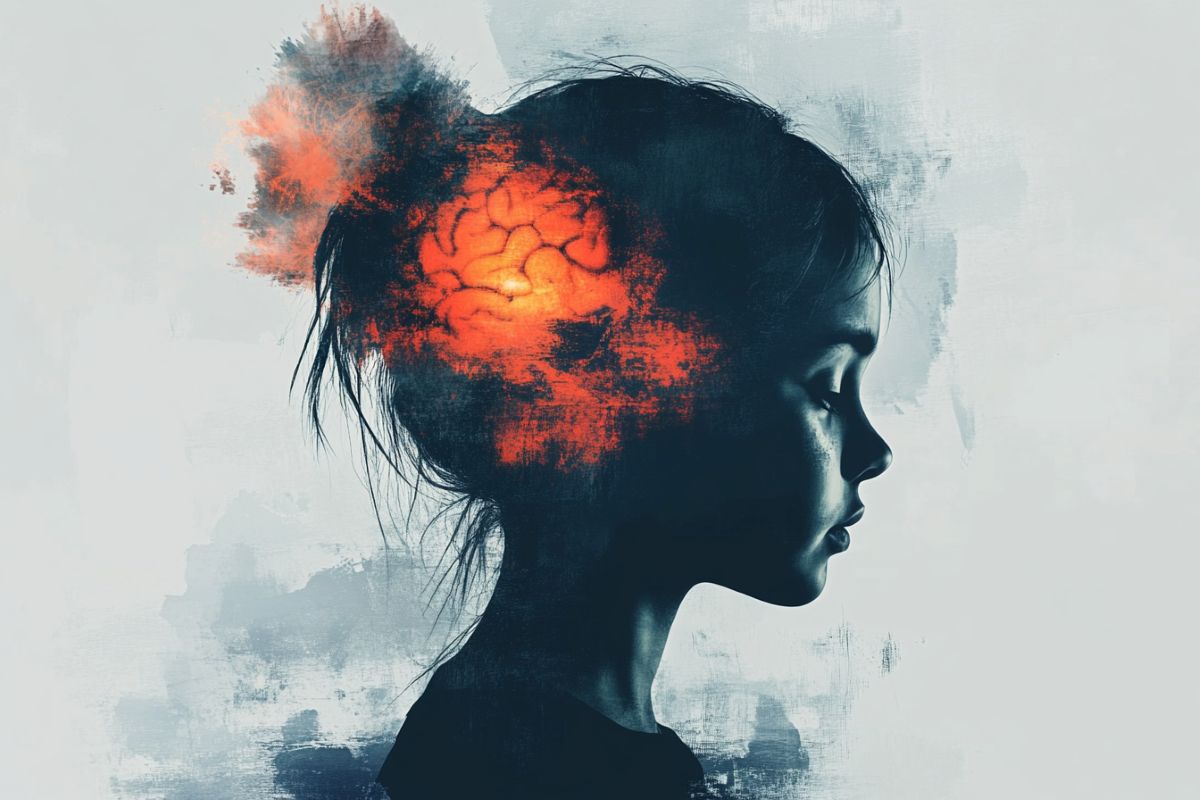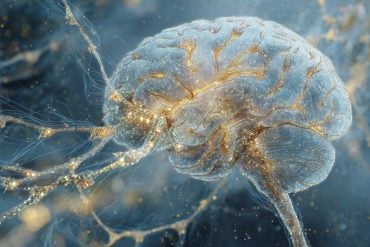Summary: A decade-long study reveals how childhood adversity alters brain development, increasing risks for mental health disorders and substance use. Researchers found that teens who experienced early adversity showed delayed cognitive control, with unusual brain activity in regions linked to self-regulation.
Connectivity between key brain regions was a stronger predictor of substance use than behavioral control, suggesting neural patterns may indicate future risk. Despite these challenges, the brain’s resilience offers hope, as cognitive control function often improves in late adolescence, highlighting opportunities for early intervention.
Key Facts
- Adversity and Brain Development: Early life adversity is linked to delayed brain maturation in areas responsible for focus and self-control.
- Substance Use Prediction: Brain connectivity patterns, rather than behavioral control, were stronger predictors of future substance use.
- Potential for Recovery: Delayed cognitive control in early adolescence often improves over time, suggesting the brain’s resilience to adversity.
Source: Virginia Tech
While researchers have long spotlighted the role childhood abuse, poverty, and substance use play in human development, Virginia Tech’s Jungmeen Kim-Spoon is pulling back the curtain on what actually happens inside the brains of the young adults affected.
For the past 10 years, Kim-Spoon and her colleague Brooks Casas have co-led a research team that has tracked the brain function of teens. They found adolescents who experienced early life adversity showed unusual brain activity during tasks that require focus and self-control.

This finding suggests delayed development in certain areas of the brain, which is linked to higher risks for mental health disorders in early adulthood and future substance use.
“Our findings show that early adverse experiences not only predict and impact mental health such as depression and anxiety, but also affect brain development,” said Kim-Spoon, professor of psychology.
The first-of-its-kind study recently resulted in two published journal articles, one in Development and Psychopathology and another in Biological Psychiatry: Cognitive Neuroscience and Neuroimaging. The former discusses findings related to maltreatment, brain development related to cognitive control, and psychopathology. The latter focuses on connectivity between neural circuits of the brain as a predictor of substance use initiation.
Jungmeen said that despite the well documented connection between adverse experiences and the development of mental health disorders, the lack of available information on exactly how adolescents are impacted internally motivated the research.
“By age 18, more than half of adults in the United States have experienced at least one type of adversity,” said Kim-Spoon, who is also director of the JK Lifespan Development Lab at Virginia Tech.
“Yet our understanding about how adverse experiences may alter the ways in which the brain and nervous system change over time, increasing vulnerability to mental health and substance use disorders, remains vastly insufficient.”
She and her collaborators set out to investigate this by recruiting adolescents from rural, suburban, and urban communities in Southwest Virginia, North Carolina, Tennessee, and West Virginia in 2014.
Over 10 years, they tracked participant brain function, neural precursors – neurobiological markers in the developing brain – and other developmental check points through annual MRI scanning, questionnaires, and neurocognitive testing.
The research team includes:
- Casas, professor with the Fralin Biomedical Research Institute at VTC and the Department of Psychology of the Virginia Tech College of Science
- The late Warren Bickel, professor with the Fralin Biomedical Research Institute and the Department of Psychology of the College of Science
- Stephen LaConte, professor with the Fralin Biomedical Research Institute and the Department of Biomedical Engineering and Mechanics of the College of Engineering at Virginia Tech
- Tae-Ho Lee, associate professor of psychology at Virginia Tech
- Kirby Deater-Deckard, professor of psychological and brain sciences, University of Massachusetts Amherst
Participants’ family dynamics, decision-making skills, substance use initiation and frequency, personality factors, and social relationships were also assessed yearly with the goal of providing a well-rounded view of the factors impacting the adolescents.
“Jungmeen and I get to tackle thorny problems while pursuing answers to questions that matter for promoting healthier youth development,” Deater-Deckard said.
“Our team utilizes state-of-the-art quantitative modeling techniques to integrate complex arrays of data from many sources such as surveys, observations, and brain imaging. She has helped me understand the complex changes in health and functioning over time.”
Researchers also annually observed adolescents with no prior history of substance use in the same study sample from ages 14 to 21 over a period of seven years. Their findings suggest brain connectivity — the pattern of connections between different parts of the brain — rather than cognitive control behavior — the ability to adapt your behavior to meet your goals, and to override automatic responses — was the stronger predictor of future substance use.
Specifically, stronger connectivity between the dorsal anterior cingulate cortex and the dorsolateral prefrontal cortex — two brain regions that are crucial to cognitive control — was associated with delayed substance use onset, and this connectivity pattern showed a significant drop one year prior to substance use initiation.
Some of the group’s findings also illustrate the brain’s resiliency. Although cognitive control brain functioning is delayed in early adolescence following childhood maltreatment, the findings suggest it often “catches up” during middle to late adolescence, suggesting neural plasticity and opportunities to help these young people.
“By conducting more research on neural plasticity during adolescence, we can shed light on the brain’s potential as a target for preventive interventions, aimed at promoting resilient functioning in young people facing adversity,” Kim-Spoon said.
Fueled by these results and supported by several grants from the National Institutes of Health to Kim-Spoon and Casas as well as the Virginia Tech Institute for Society, Culture and Environment, Kim-Spoon and the research team plans to continue this study for another five years. As the participants enter their 20s, the team will focus more on examining their relationships, networks, and social environments to understand how they contribute to the ways young people navigate unique challenges in early adulthood.
“This longitudinal project has been very rewarding especially in terms of collaborating with brilliant minds within Virginia Tech and outside,” Kim-Spoon said. “It has been fun to look into the things we can do to help young people develop healthier, and it will be interesting to see what we will find in the next few years.”
By expanding this research, Kim-Spoon and her collaborators can contribute to the development of effective resilience and protective strategies to help people at higher risk of developing mental health and addiction problems improve their future well-being.
Kim-Spoon said she believes we are just beginning to better understand the factors affecting young people’s mental health, substance use, and well-being by examining how brain function and development interact with social and emotional dynamics, and spirituality.
“Adverse experiences, no matter how we view them, are tough, but there are things we can do to help these young people develop healthier, such as access to parental support, education, and positive experiences with peer groups,” Kim-Spoon said.
About this neurodevelopment and childhood adversity research news
Author: Margaret Ashburn
Source: Virginia Tech
Contact: Margaret Ashburn – Virginia Tech
Image: The image is credited to Neuroscience News
Orignial Research: Open access.
“Psychopathology as long-term sequelae of maltreatment and socioeconomic disadvantage: Neurocognitive development perspectives” by Kim-Spoon et al. Development and Psychopathology
Open access.
“Neural Signatures of Cognitive Control Predict Future Adolescent Substance Use Onset and Frequency” by Kim-Spoon et al. Biological Psychiatry: Cognitive Neuroscience and Neuroimaging
Abstract
Neural Signatures of Cognitive Control Predict Future Adolescent Substance Use Onset and Frequency
Background
Adolescent substance use is a significant predictor of future addiction and related disorders. Understanding neural mechanisms underlying substance use initiation and frequency during adolescence is critical for early prevention and intervention.
Methods
The current longitudinal study followed 91 substance-naïve adolescents annually for 7 years from ages 14 to 21 years to identify potential neural precursors that predict substance use initiation and frequency. Cognitive control processes were examined using the Multi-Source Interference Task to assess functional neural connectivity. A questionnaire was used to assess substance use frequency.
Results
Stronger connectivity between the dorsal anterior cingulate cortex (dACC) and dorsolateral prefrontal cortex (dlPFC) at time 1 predicted a delayed onset of substance use, indicative of a protective effect. A notable decline in this dACC–dlPFC connectivity was observed 1 year prior to substance use initiation. Conversely, lower connectivity of the dACC with the supplementary motor area and heightened connectivity of the anterior insula with the dorsal medial prefrontal cortex and angular gyrus were predictive of greater frequency of future substance use. These findings remained after controlling for demographic and socioeconomic covariates.
Conclusions
This study highlights the critical role of cognitive control–related neural connectivity in predicting substance use initiation and frequency during adolescence. The results imply that efforts to strengthen and monitor the development of the top-down cognitive control system in the brain from early adolescence can be protective and deter progression into problematic substance use. Furthermore, for adolescents with heightened frequency of substance use, interventions may prove more effective by targeting interoceptive processes in cognitive control training.
Abstract
Psychopathology as long-term sequelae of maltreatment and socioeconomic disadvantage: Neurocognitive development perspectives
Neuroscience research underscores the critical impact of adverse experiences on brain development. Yet, there is limited understanding of the specific pathways linking adverse experiences to accelerated or delayed brain development and their ultimate contributions to psychopathology.
Here, we present new longitudinal data demonstrating that neurocognitive functioning during adolescence, as affected by adverse experiences, predicts psychopathology during young adulthood.
The sample included 167 participants (52% male) assessed in adolescence and young adulthood. Adverse experiences were measured by early maltreatment experiences and low family socioeconomic status.
Cognitive control was assessed by neural activation and behavioral performance during the Multi-Source Interference Task. Psychopathology was measured by self-reported internalizing and externalizing symptomatology.
Results indicated that higher maltreatment predicted heightened frontoparietal activation during cognitive control, indicating delayed neurodevelopment, which, in turn predicted higher internalizing and externalizing symptomatology.
Furthermore, higher maltreatment predicted a steeper decline in frontoparietal activation across adolescence, indicating neural plasticity in cognitive control-related brain development, which was associated with lower internalizing symptomatology.
Our results elucidate the crucial role of neurocognitive development in the processes linking adverse experiences and psychopathology. Implications of the findings and directions for future research on the effects of adverse experiences on brain development are discussed.







